Reef aquariums can quickly lose their appeal once algae have started to take hold of the aquatic landscape. Here are some of the more common forms of algae you might encounter in your reef tank:
- Hair Algae: a type of green filamentous algae that looks like hair
- Bubble Algae: spherical, often green, algae
- Blue-green Algae (Cyanobacteria): often appears as a blue-green coating along rocks or other surfaces in aquariums
- Green Turf Algae: thicker, more mat-like green algae covering rocks and other surfaces
- Filamentous Algae: hair algae or “pond scum”
- Film Algae: algae that tends to form on the glass surfaces of the tank
- Calcareous Algae: crust-like algae that can be difficult to remove
Many times, these algae species will populate under different conditions. Too much light and excessive nutrients are the most common reasons you’ll see a majority of the common algae species appear. However, not all algae are nuisance algae, and some amounts of some types are fine existing in your tank.
Depending on your specific algae problem, you can best manage it with fish, crustaceans, or mollusks (or a combination of them). Introducing algae eaters can help decrease the amount of algal growth in your tank while also providing food to your newfound companions. Here are some of the best algae-eating fish (and some other aquatic animals) to add to your reef tank clean-up crew:
1. Tangs
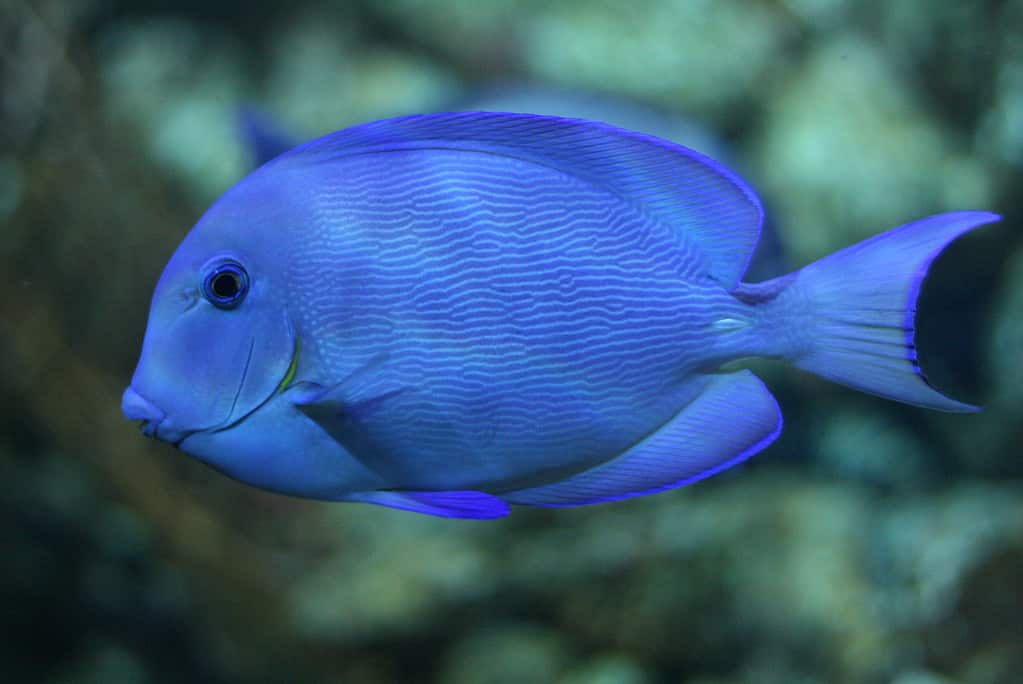
The Atlantic blue tang is also a voracious algae eater with vivid blue coloration.
©Sylfred1977, CC BY-SA 3.0 via Wikimedia Commons – License
There are tons of tang species to choose from if you’re looking to add an algae-eating fish to your reef tank. Some favorites are the bristletooth tang, chevron tang, and Achilles tang. These species of tang will consume all types of algae and even dinoflagellates but seem most effective at eating hair or turf algae.
2. Rabbitfish
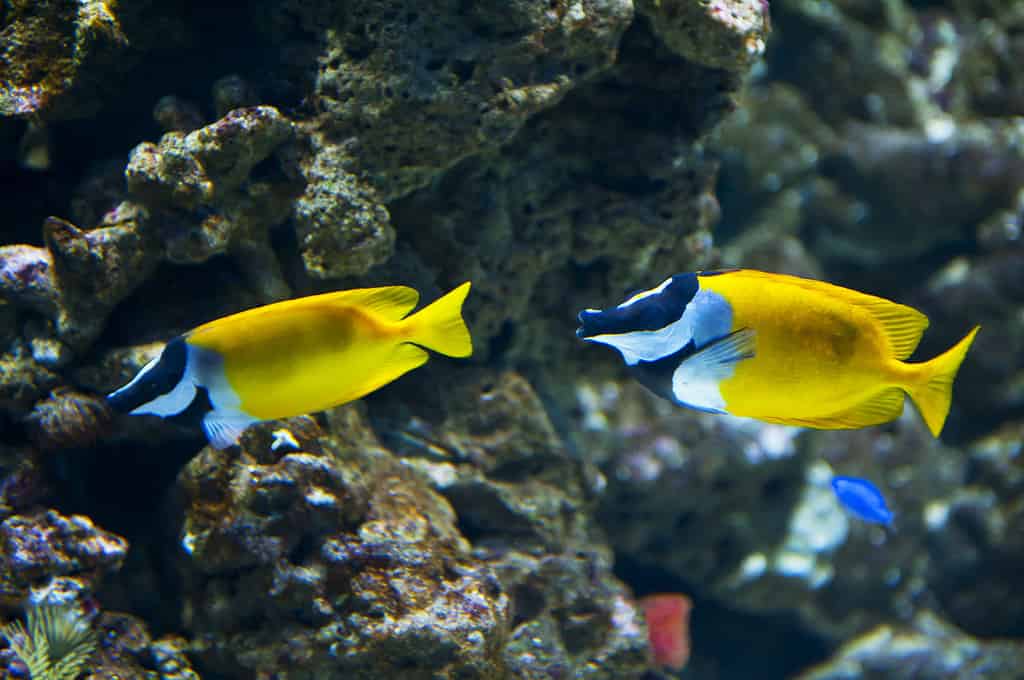
Foxface rabbitfish are known to be avid hair algae nibblers.
©Issaurinko/ via Getty Images
Rabbitfish of all types are good at keeping algae growth in check. They mainly feed off of hair algae and will also pick at seaweed (or macroalgae). If you want to use rabbitfish for algae cleaning purposes, make sure you only get one. Multiple rabbitfish are likely to fight each other but can maintain peace with other species of fish.
3. Snails
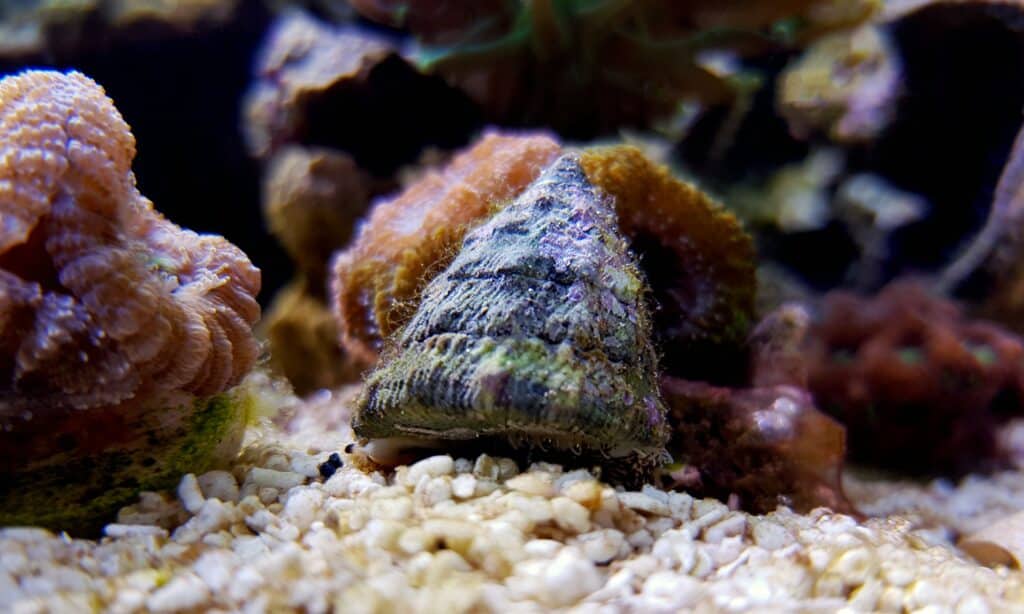
Astraea snails will not hesitate to eat some macroalgae or dinoflagellates.
©iStock.com/vojce
The snail is one of the original algae clean-up crew members. There are tons of different types of these algae-eating creatures you can add to your reef tank. They’re one of the better animals to add to your tank to take care of film algae, which can quickly and easily cloud up the glass. Some of the snails to look into are cerith snails and astraea snails. If you have live corals in your tank, then you might get a hitchhiking snail species for free!
4. Hermit Crabs

Nerite, conch, and trochus snails are just a few of the reef-aquarium-friendly mollusks.
©Lauren Suryanata/Shutterstock.com
Hermit crabs are hard workers. Hermit crabs will eat filamentous algae and nuisance algae like red slime algae, which is a type of cyanobacteria. They’re always picking and scavenging away at algae and any leftover food not consumed by other fish. This helps keep other algae blooms from occurring since leftover food can rot and spike nitrate and phosphate levels in the water. Beware of keeping hermit crabs and snails together. Hermit crabs might predate on the snails to use their shells.
5. Blennies
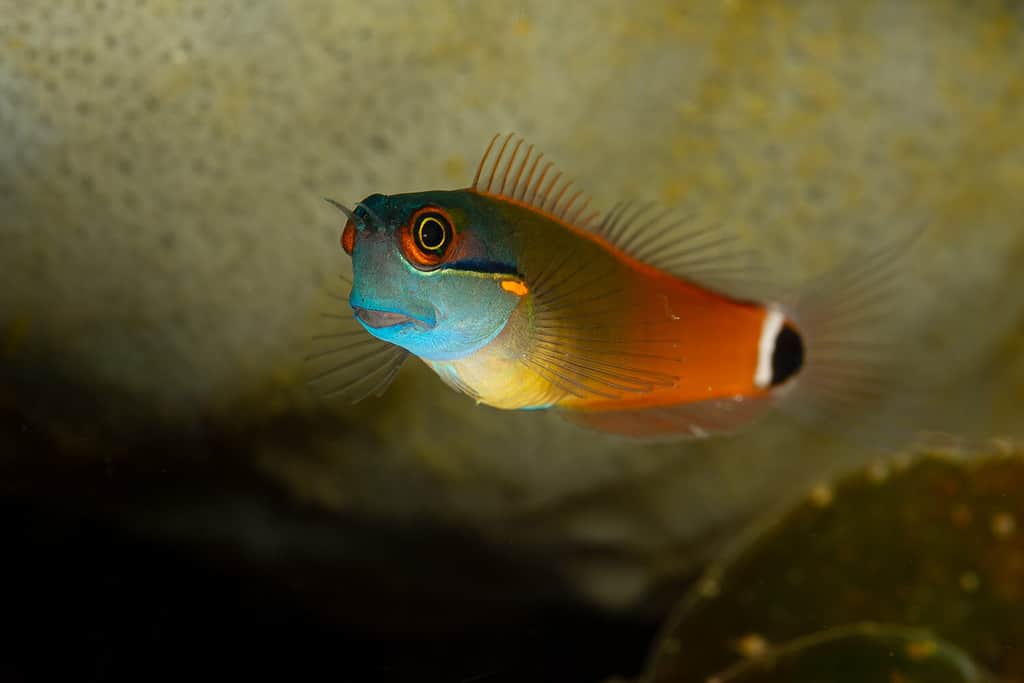
Tailspot blennies and other species thrive in tanks with algae.
©Subphoto.com/Shutterstock.com
Like tangs, blennies are a large family of fish that are suitable for adding to your reef aquarium to aid in algae removal. The algae blenny is very appropriately named for its tenacity in cleaning every rock and glass surface possible in its tank. Blenny species also vary in size so you can find one that’s appropriate for whatever size tank you’re working with.
6. Urchins
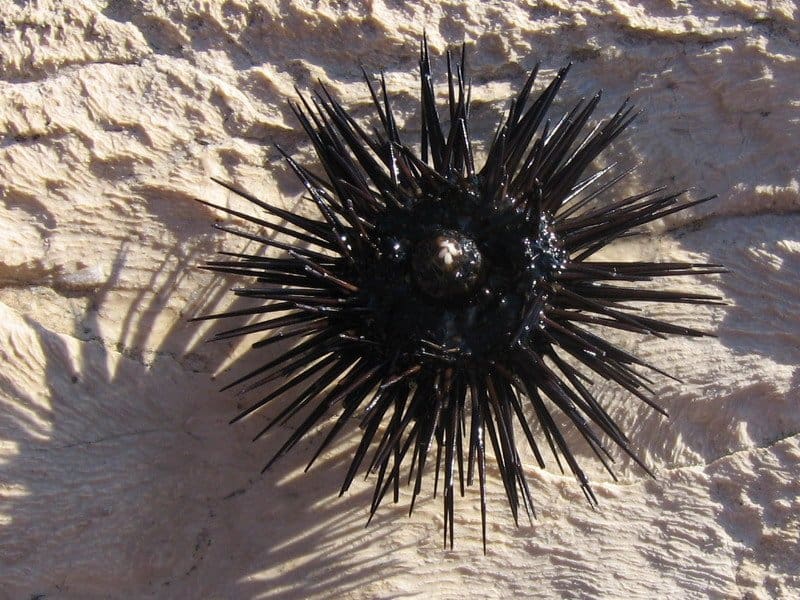
Sea urchins can rove for algae all day long.
©Lacen – Public Domain
You might think sea urchins are relatively stationary animals, but they are on the move when algae is nearby. Urchins like the tuxedo urchin will eat a variety of algae but seem to be best at removing calcareous algae. If you have an issue with calcareous algae, consider adding this algae eater to your reef tank. You might be surprised how quickly the issue is resolved!
7. Emerald Crab

Emerald crabs (
Mithraculus sculptus) will also eat green algae and leftover fish food.
©Damocean/ via Getty Images
Crabs like the emerald crab are perfect for obliterating bubble algae, which can be a hazard to live corals and can even kill them. Additionally, bubble algae can trap leftover bits of food, which can start another type of algae bloom. Since corals are an expensive part of the reef aquarium hobby, having some algae-eaters that specialize in consuming bubble algae can save you money and time. Plus, having these crabs can also reduce the chance of another type of algae setting up shop in your tank.
8. Peppermint Shrimp
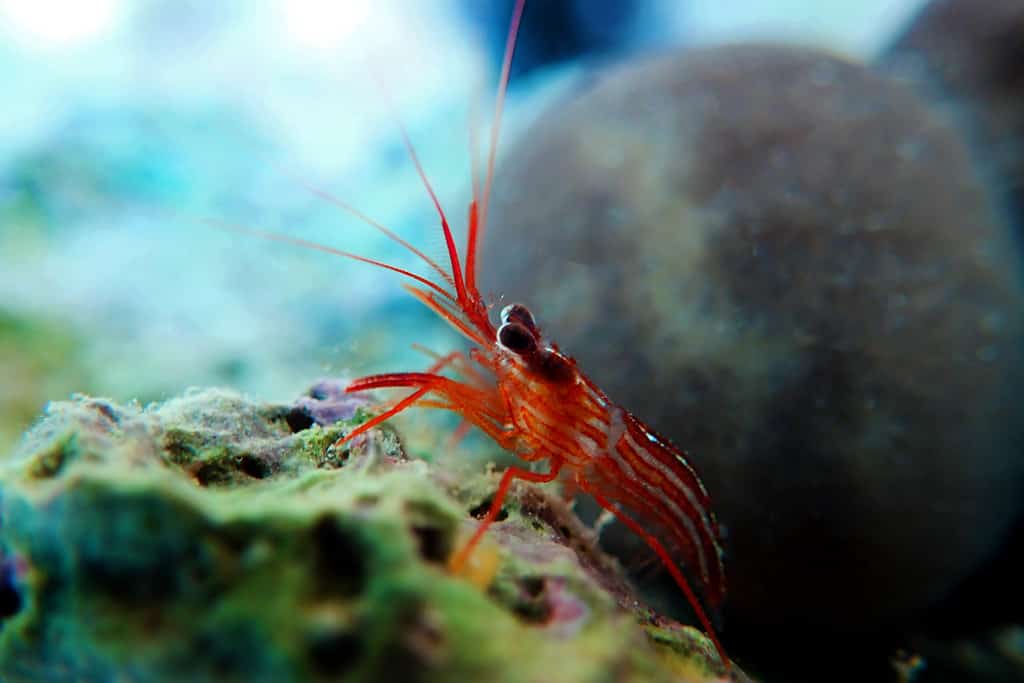
Shrimp like the peppermint shrimp is another classic cleaner addition for your reef tank.
©vojce/ via Getty Images
Peppermint shrimp are entertaining to watch and also clean up various bits of detritus, leftovers, and hair algae. They will feed on anything, even other shrimp or bits of fresh fish, so you don’t have to worry much about food going to waste when you have these algae-eaters on the job. If you have a lot of rocks or other crevices where food can get stuck, this species of shrimp will scavenge and make sure nothing goes to waste.
9. Gobies
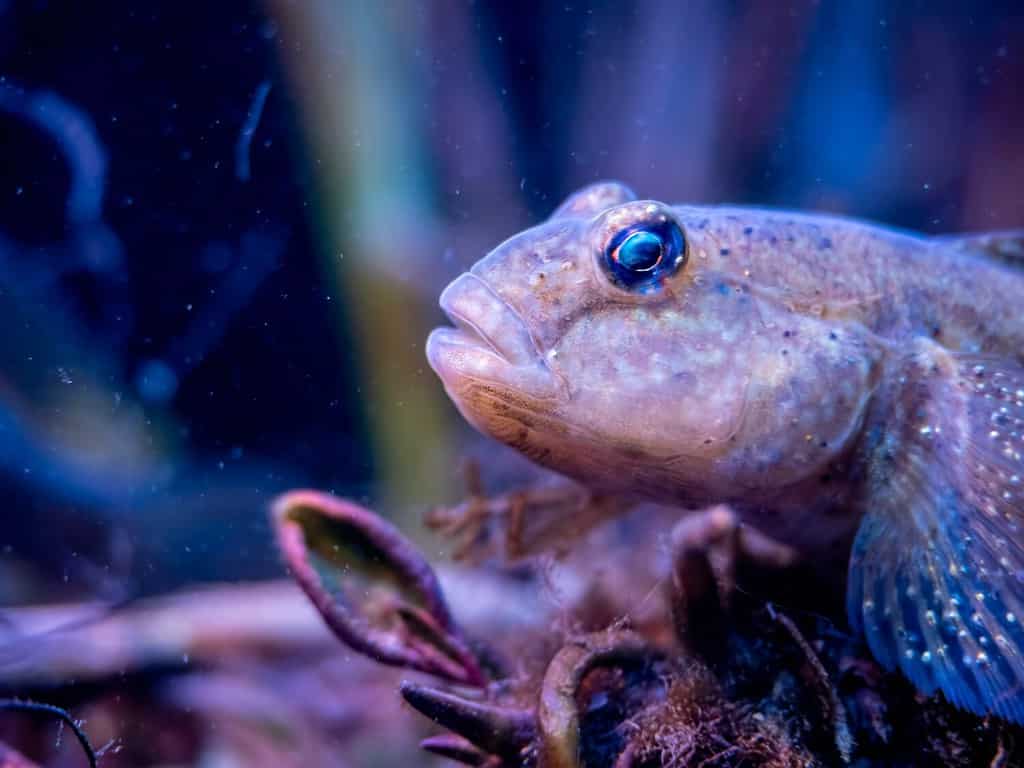
Gobies spit gravel at each other, but they’re actually just sifting through the substrate to extract nutrients.
©Dr. Victor Wong/Shutterstock.com
There are quite a few species of gobies to pick from to help reduce the algae population in your tank. Sleeper-bandit, Rainford, and sphynx gobies are all effective algae consumers. While different species have different algae preferences, they’re peaceful with other species so you can choose a few that have the same or similar water and temperature requirements.
10. Angelfish
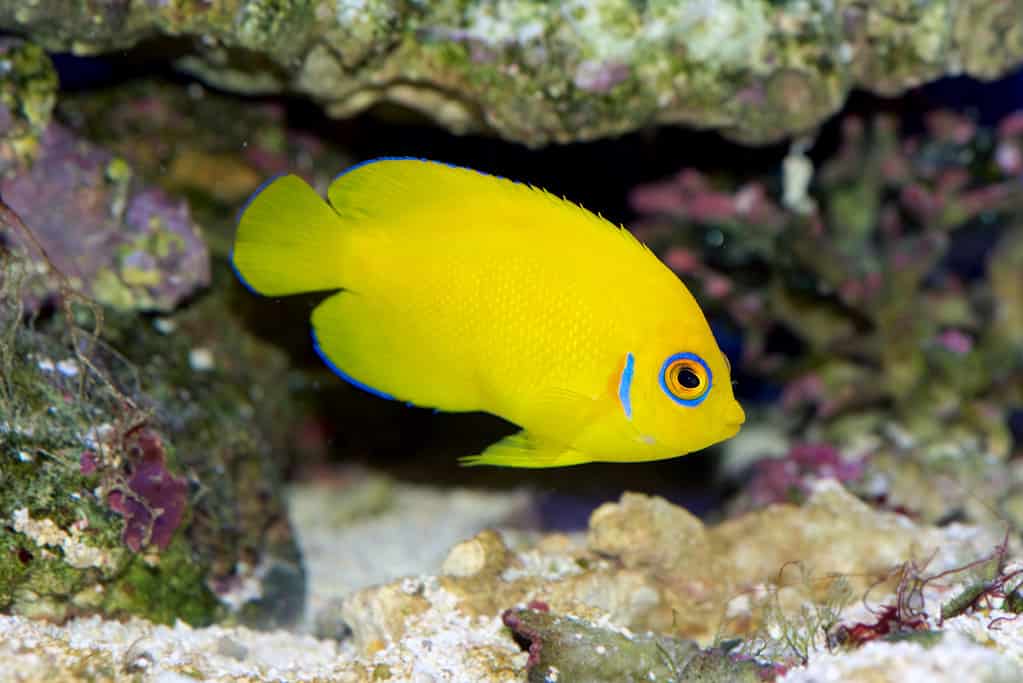
The lemon peel
angelfish
is extremely bright in color and is very active in their tank.
©PAUL ATKINSON/Shutterstock.com
Angelfish can be used for algae cleanup as well as a centerpiece in your reef aquarium. Many are beautiful and vibrant, such as the lemon peel angelfish (Centropyge flavissima). This species in particular is a heavy algae feeder and prefers filamentous algae but will also feed upon microalgae. If you want an angelfish that eats hair algae, check out the coral beauty dwarf angelfish.
11. Sea Hare
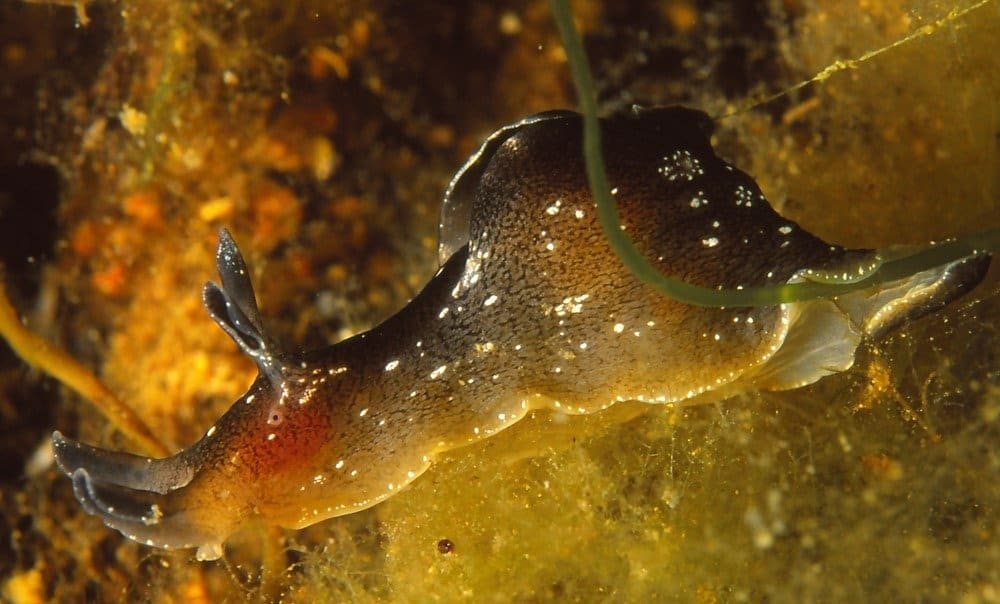
Sea hares (
Dolabella Auricularia) require at least 75 gallons to thrive.
©valda butterworth/Shutterstock.com
This unique and dedicated algae-eater can clean your reef tank, but you have to make sure your tank is large enough to accommodate them. They’re also not for newbies, as they’re a high-maintenance animal. They’re not only sensitive to changes in the water but so heavily rely on feeding upon hair algae that once they’ve eaten it all, they could starve to death. Having a steady supply of hair algae is needed to keep this invertebrate. Sea hares may also be expensive to acquire, if you’re able to find them at all.
12. Banded Coral Shrimp

This shrimp can grow 3 inches long and doesn’t take too kindly to others of its species.
©Wirestock/ via Getty Images
The banded coral shrimp (Stenopus hispidus) is essentially a garbage disposal for your tank. From detritus to algae to dead fish or snails, this shrimp is will eat it all. Although you might not directly witness their activity, you will surely notice a cleaner tank after introducing this algae eater to your reef aquarium. Be sure to provide places to hide for this nocturnal shrimp.
The photo featured at the top of this post is © Ja'Crispy/iStock via Getty Images
Thank you for reading! Have some feedback for us? Contact the AZ Animals editorial team.







